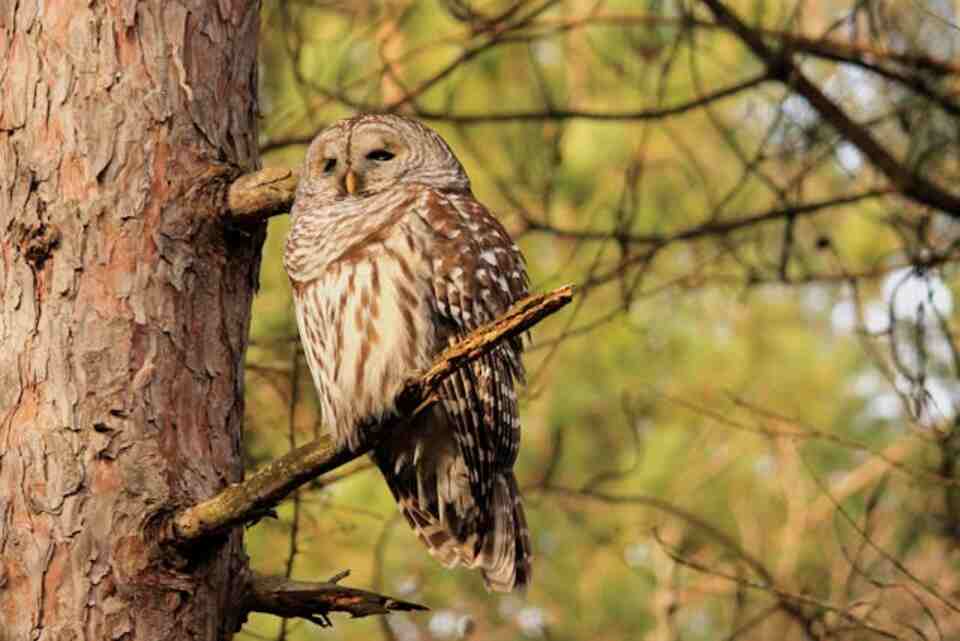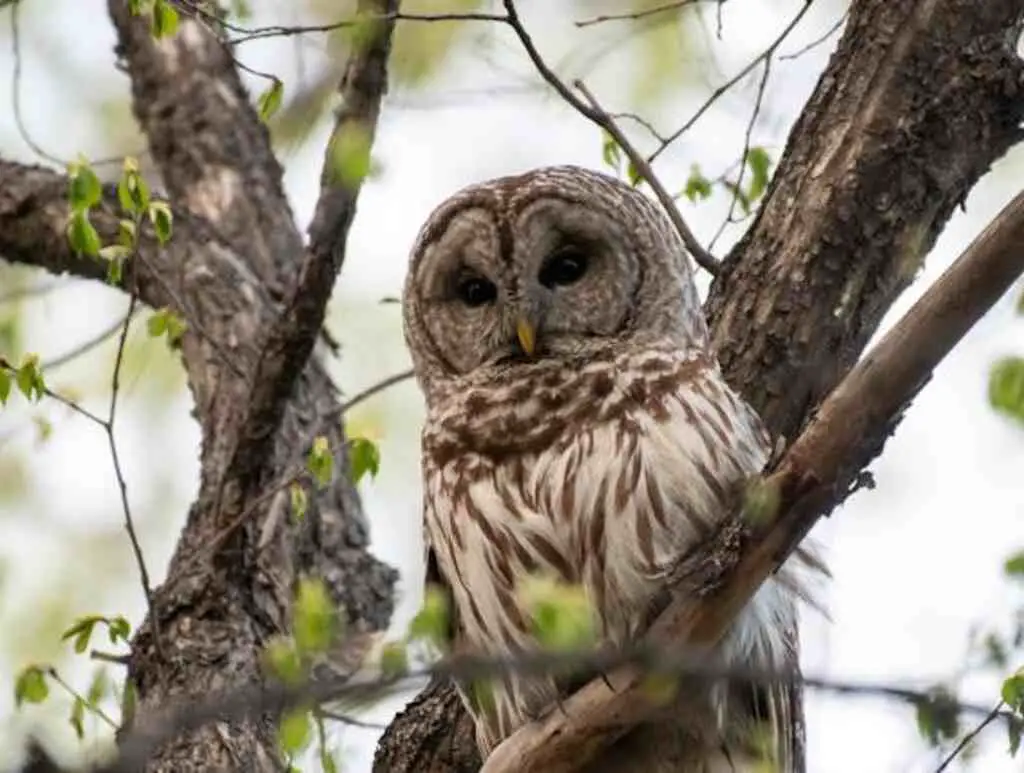Owls are fascinating creatures that have captivated human imagination for centuries. These nocturnal birds of prey are not only beautiful but also play a crucial role in maintaining the ecological balance of our environment. If you’re an owl enthusiast or simply want to enhance the biodiversity in your backyard, attracting owls can be a rewarding experience. In this comprehensive guide, we’ll explore various methods and techniques to make your yard a welcoming habitat for these majestic birds.
Table of Contents
Understanding Owl Behavior and Habitat Preferences
Before diving into the specific strategies for attracting owls, it’s essential to understand their behavior and habitat preferences. This knowledge will help you create an environment that meets their needs and increases the likelihood of attracting them to your yard.
Owl Species and Their Characteristics
There are over 200 species of owls worldwide, with varying sizes, habitats, and behaviors. Some common owl species you might encounter in North America include:
Each species has its unique characteristics and preferences, but they share some common traits:
- Nocturnal behavior: Most owls are active at night, hunting for prey under the cover of darkness.
- Keen eyesight and hearing: Owls have exceptional vision and hearing abilities, which they use to locate prey.
- Silent flight: Their specialized feathers allow for near-silent flight, making them efficient hunters.
- Diverse diet: Owls feed on a variety of small animals, including rodents, insects, and sometimes small birds.
Preferred Habitats
Owls generally prefer habitats that offer:
- Dense vegetation: Trees, shrubs, and tall grasses provide cover and perching spots.
- Open areas: Spaces for hunting and observing their surroundings.
- Water sources: Nearby water bodies attract potential prey and provide drinking water.
- Nesting sites: Cavities in trees, abandoned buildings, or nesting boxes for breeding.
Understanding these preferences will guide you in creating an owl-friendly environment in your yard.

Creating an Owl-Friendly Landscape
To attract owls to your yard, you need to transform it into a habitat that meets their needs. Here are some key steps to create an owl-friendly landscape:
Preserve and Plant Native Trees
Owls rely heavily on trees for roosting, nesting, and hunting. To make your yard more appealing to owls:
- Preserve existing mature trees: If you have large, old trees on your property, keep them intact as they provide excellent habitats for owls.
- Plant native tree species: Choose trees that are native to your region, as they will attract local wildlife and provide a natural ecosystem for owls. Some owl-friendly tree species include:
- Oak
- Pine
- Maple
- Elm
- Hickory
- Create a diverse canopy: Plant trees of varying heights to create a multi-layered canopy, which provides different perching and nesting options for owls.
Maintain Natural Areas
Owls prefer areas that mimic their natural habitats. To achieve this:
- Leave some areas unmowed: Allow portions of your yard to grow wild, creating a more natural environment.
- Create brush piles: Stack fallen branches and logs to provide shelter for small animals, which in turn attract owls.
- Avoid excessive pruning: Maintain some dead branches on trees (as long as they don’t pose a safety hazard) as they can serve as perches for owls.
Provide Water Sources
While owls don’t typically drink much water, they are attracted to areas with water sources because these areas attract their prey. Consider adding:
- Bird baths: Install shallow bird baths or water features that attract small birds and insects.
- Small ponds: If space allows, create a small pond that can support a variety of wildlife.
- Running water: The sound of moving water can attract both owls and their prey.
Minimize Light Pollution
Owls are nocturnal creatures, and excessive artificial lighting can disrupt their natural behavior. To create a more owl-friendly environment:
- Use minimal outdoor lighting: Reduce the number and intensity of outdoor lights in your yard.
- Install motion-activated lights: If lighting is necessary for safety, use motion-activated lights that only turn on when needed.
- Use warm-colored bulbs: If you must use outdoor lighting, opt for warm-colored bulbs (yellow or amber) instead of bright white or blue lights, which are more disruptive to nocturnal wildlife.
Providing Food Sources for Owls
While it’s not recommended to directly feed owls, you can attract them by creating an environment that supports their natural prey. Here are some ways to encourage a healthy food chain in your yard:
Attract Small Mammals
Many owl species primarily feed on small mammals. To attract these potential prey animals:
- Plant native grasses and wildflowers: These provide food and shelter for small mammals like mice and voles.
- Create rock piles: Small mammals often use rock piles for shelter and nesting.
- Leave fallen leaves: Leaf litter provides cover and foraging opportunities for small animals.
Encourage Insect Populations
Some owl species, particularly smaller ones, feed on insects. To promote a healthy insect population:
- Avoid pesticides: Chemical pesticides can harm both insects and the animals that feed on them.
- Plant native flowering plants: These attract a variety of insects, including moths, which are a favorite food of many owl species.
- Install a bug light: Use a special insect-attracting light away from your house to create a feeding area for owls.
Maintain a Diverse Ecosystem
A healthy, diverse ecosystem will naturally attract owls by providing a variety of food sources. This includes:
- Encouraging biodiversity: Plant a variety of native species to attract different types of wildlife.
- Creating different habitats: Include areas of long grass, shrubs, and trees to support various animals.
- Avoiding the use of rodenticides: These can be harmful to owls that consume poisoned prey.

Installing Nesting Boxes
Providing nesting boxes can be an effective way to attract owls, especially in areas where natural nesting sites are scarce. Here’s what you need to know about owl nesting boxes:
Choosing the Right Nesting Box
Different owl species have different nesting preferences. Here are some general guidelines:
- Size: The box should be large enough for the targeted owl species. For example:
- Barn Owl: 24″ x 24″ x 18″
- Screech Owl: 12″ x 12″ x 15″
- Barred Owl: 24″ x 24″ x 24″
- Material: Use untreated wood, such as cedar or pine, which can withstand outdoor conditions.
- Entrance hole: The size and shape of the entrance hole should be appropriate for the species you’re targeting.
- Ventilation and drainage: Include small holes for air circulation and drainage.
Proper Placement of Nesting Boxes
The location of your nesting box is crucial for attracting owls:
- Height: Mount the box at least 10-20 feet high, depending on the species.
- Direction: Face the entrance hole away from prevailing winds and direct sunlight.
- Cover: Place the box near trees or on the edge of wooded areas for protection.
- Disturbance: Choose a location away from high-traffic areas to minimize disturbance.
Maintaining Nesting Boxes
To keep your nesting boxes attractive to owls:
- Annual cleaning: Clean out old nesting material each year after the breeding season.
- Repairs: Check for and repair any damage to ensure the box remains weatherproof.
- Monitoring: Observe the box from a distance to track occupancy and success.
Creating Perches and Hunting Posts
Owls need suitable perches for hunting and resting. Here’s how you can provide them:
Natural Perches
- Dead trees: Leave dead trees or “snags” standing if they don’t pose a safety risk.
- Tall posts: Install tall wooden posts in open areas of your yard.
- Large branches: Secure large, sturdy branches to existing structures or trees.
Artificial Perches
- T-shaped perches: Install T-shaped perches made from wooden beams or metal pipes.
- Platform perches: Create flat platforms on top of poles or attached to trees.
- Fence posts: If you have a fence, leave some posts slightly taller to serve as perches.
Minimizing Threats to Owls
To make your yard a safe haven for owls, it’s important to minimize potential threats:
Reduce Chemical Use
- Avoid pesticides: These can harm owls directly or through their prey.
- Use natural fertilizers: Opt for organic gardening methods to maintain a healthy ecosystem.
- Proper disposal: Ensure proper disposal of any chemicals to prevent contamination.
Prevent Window Collisions
- Window decals: Apply bird-safe window decals or patterns to prevent collisions.
- External screens: Install external screens on windows to reduce reflections.
- Night lighting: Minimize indoor lighting at night to reduce window visibility.
Manage Domestic Pets
- Keep cats indoors: Domestic cats can prey on owls, especially young ones.
- Supervise dogs: Keep dogs on a leash or supervise them when outdoors, especially at night.
- Secure pet food: Store pet food indoors to avoid attracting unwanted wildlife.

Observing and Appreciating Owls Responsibly
Once you’ve successfully attracted owls to your yard, it’s important to observe them responsibly:
Maintain Distance
- Use binoculars: Observe owls from a distance using binoculars or a spotting scope.
- Avoid approaching nests: Keep a respectful distance from nesting sites to prevent disturbance.
- Limit nighttime activities: Minimize outdoor activities at night to avoid disturbing hunting owls.
Educate Others
- Share knowledge: Educate family members and neighbors about the importance of owls.
- Promote conservation: Encourage others to create owl-friendly habitats in their yards.
- Join local groups: Participate in local bird-watching or conservation groups to share experiences and learn from others.
Document Sightings
- Keep a journal: Record owl sightings, behaviors, and any notable observations with a journal.
- Photography: If you choose to photograph owls, use a long lens and avoid using flash.
- Contribute to citizen science: Report your owl sightings to local wildlife agencies or citizen science projects.
Conclusion
Attracting owls to your yard is a rewarding endeavor that not only enhances your personal connection with nature but also contributes to local biodiversity and ecosystem health. By creating a suitable habitat, providing food sources, and minimizing threats, you can transform your yard into a welcoming sanctuary for these magnificent birds.
Remember that attracting owls is a gradual process that requires patience and consistency. It may take time for owls to discover and become comfortable in your newly created habitat. Continue to maintain and improve your owl-friendly yard, and you’ll increase your chances of enjoying the company of these captivating creatures.
As you embark on this journey to attract owls, always prioritize the well-being of the birds and their natural behaviors. By fostering a respectful coexistence with owls, you’ll not only enrich your own life but also play a vital role in owl conservation efforts.
So, start implementing these strategies today, and soon you may find yourself enchanted by the silent flight and haunting calls of owls in your very own backyard. Happy owl watching!


